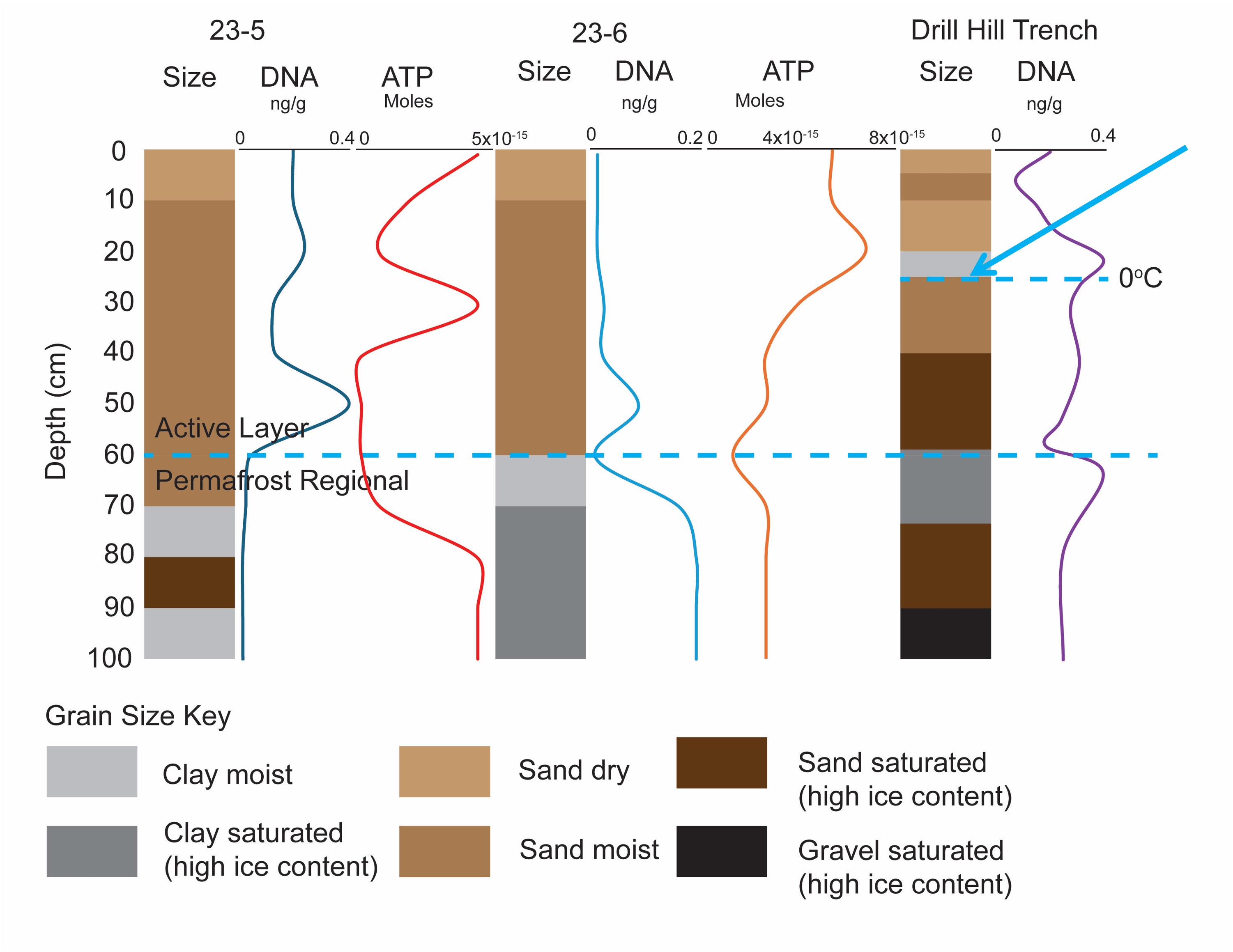Background
This Senior Staff Renewal project focuses on developing multiomic skills in this case, metagenomics (to determine microbial community structure) and metatranscriptomics (to determine microbial community function) to enable studies evaluating microbial community structure and function and learning how to apply Broadband Coherent Anti-stokes Raman Spectroscopy (BCARS) for astrobiology studies. This effort builds the SwRI Astrobiology Program by 1) expanding in-house astrobiology capabilities, and 2) developing the PI’s professional network.

Figure 1: Microbial biosignatures in two holes and one trench from the Drill Hill impactite layer within Haughton Crater, Devon Island, in the High Arctic. Microbial activity (given by ATP) is higher in finer-grained saturated sediments. DNA spikes are observed just above the freezing point of the sediments (at ~30 cm depth) and near the top of the ice (~50-70 cm) depth. These data demonstrate microbial biosignatures of extant life do not always co-locate and multiple biosignatures provide greater information than any one metric alone provides.
Approach
The project involves four interrelated technical tasks. Task 1: Field work in Haughton Crater on Devon Island, Canada, focused on permafrost sample collection with Dr. Pascal Lee (SETI) and Dr. Brian Glass (NASA Ames). Task 2: Multiomics training and hands-on research application on permafrost samples with Dr. Chris Bradburne (JHU/APL). Task 3: BCARS training and hands-on research application on permafrost samples with Drs. Amanda Stockton and Marcus Cicerone (GATech). Task 4: Develop a model for the potential subsurface variability of Mars permafrost that can be tested in follow-on external effort.
Accomplishments
Dr. Phillips-Lander quantified biomarkers of extant life (e.g., adenosine triphosphate, ATP, and total DNA) and showed that significantly more life was observed outside the impact crater than within. Both BCARS and traditional Raman analyses were conducted for permafrost samples from Haughton Crater and demonstrated organic thermal maturity increased within the first 50 cm of impactite layer. Multiple DNA extraction methods were applied to retrieve DNA for 16S amplicon sequencing, and results from these different methods were compared. Shotgun sequencing was unsuccessful, likely due to the presence of inhibitors. Based on the challenges encountered with DNA sequencing in permafrost, Dr. Phillips-Lander is leading NASA’s Interdisciplinary Consortia for Astrobiology Research focusing on developing a bespoke analytical approach for sequencing permafrost. This will enable the development of a biogeography of Arctic permafrost to predict the best places to search for life in the Martian subsurface today. Dr. Phillips-Lander gave an invited talk on the Mars Life Explorer Mission Concept at the Mars Polar Conference that focused on research results from this IR&D project. She was selected to be a member of NASA’s Search For Life Study Analysis Group which will evaluate the science objectives for the next Mars mission after Mars Sample Return and as a member of the next NASA Astrobiology Strategy Committee.

